I read so much about how crowded Italy is, and yes, primo destinations such as Rome, Florence, Capri, Venice do have tsunamis of people vying for the best table for an aperitivo, hotels that are a destination in themselves, gelato stops, and exhibits such as the wildly popular Caravaggio at the Barberini—too bad I waited too late to reserve tickets.
But the rest of Italy? Check Always Italy for hundreds of cool destinations where you will be smack in the middle of authentic experiences. In Tuscany, we drive for miles without passing a car. Though our Cortona piazzas are lively, crowded they are not, unless there’s a local evening concert—and that’s fun. Last night at dinner outside, a band with majorettes materialized. It seemed we were in a time warp, and Ed remarked that Fellini, after all, was a documentary filmmaker!
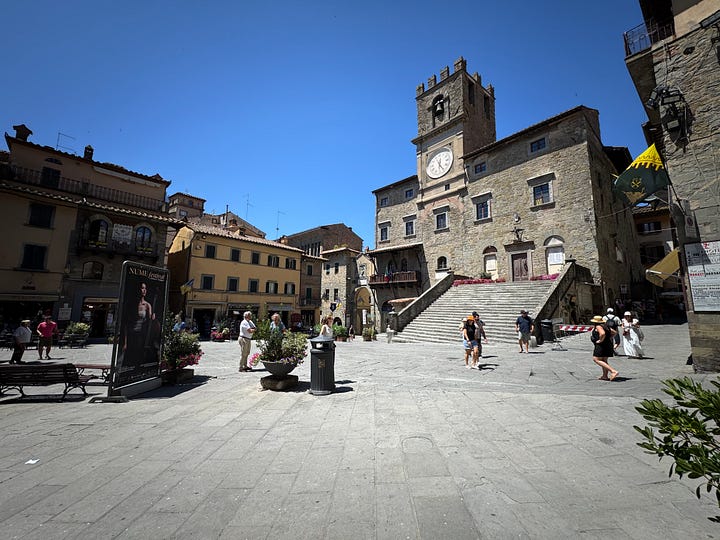
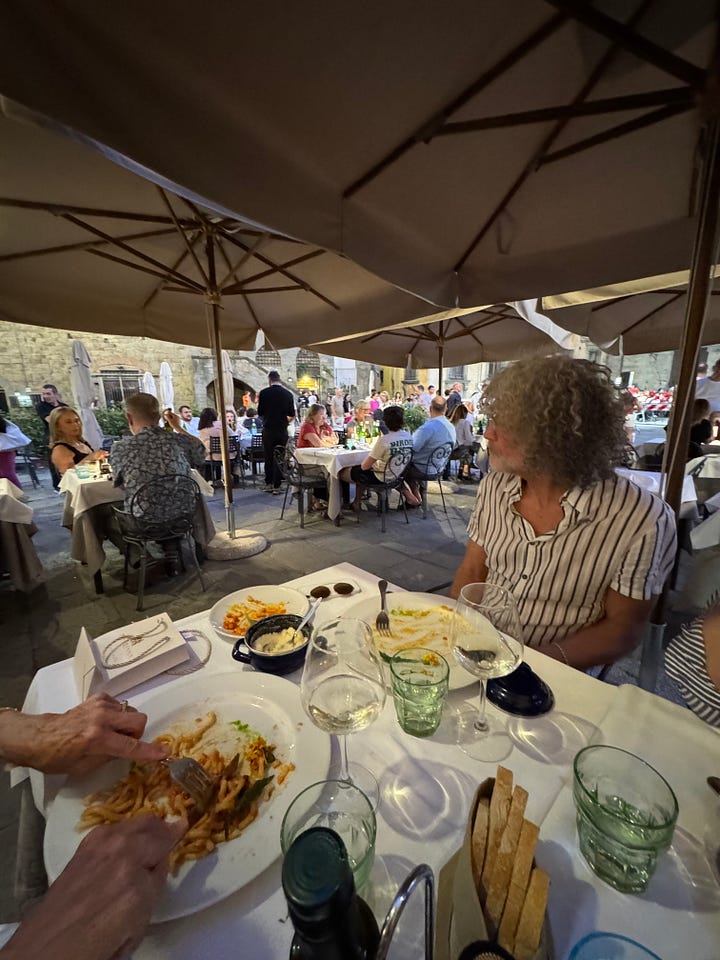
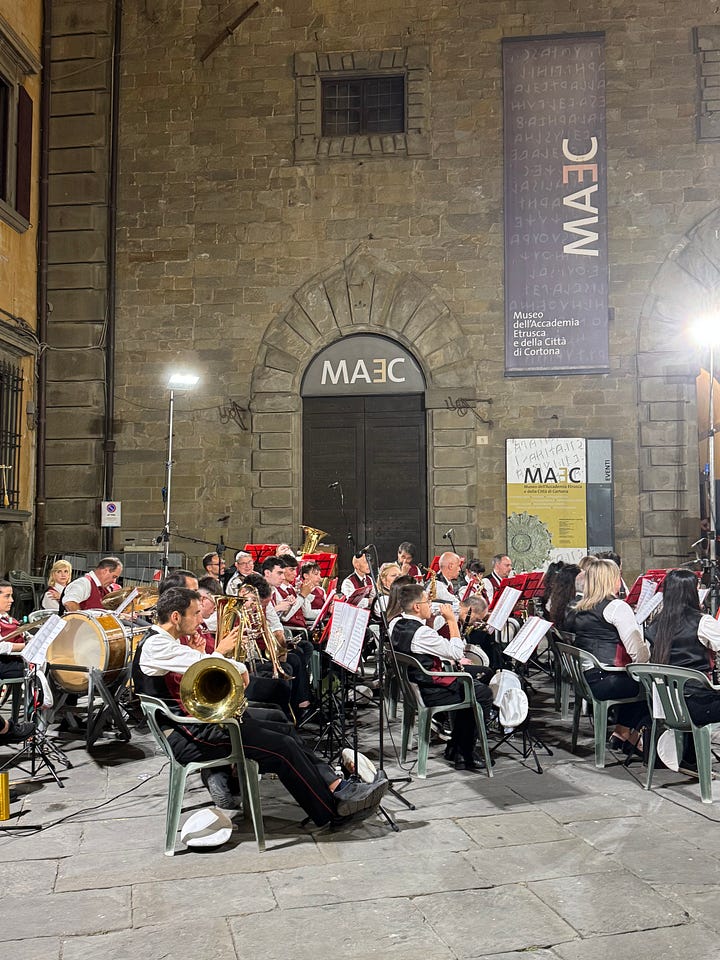
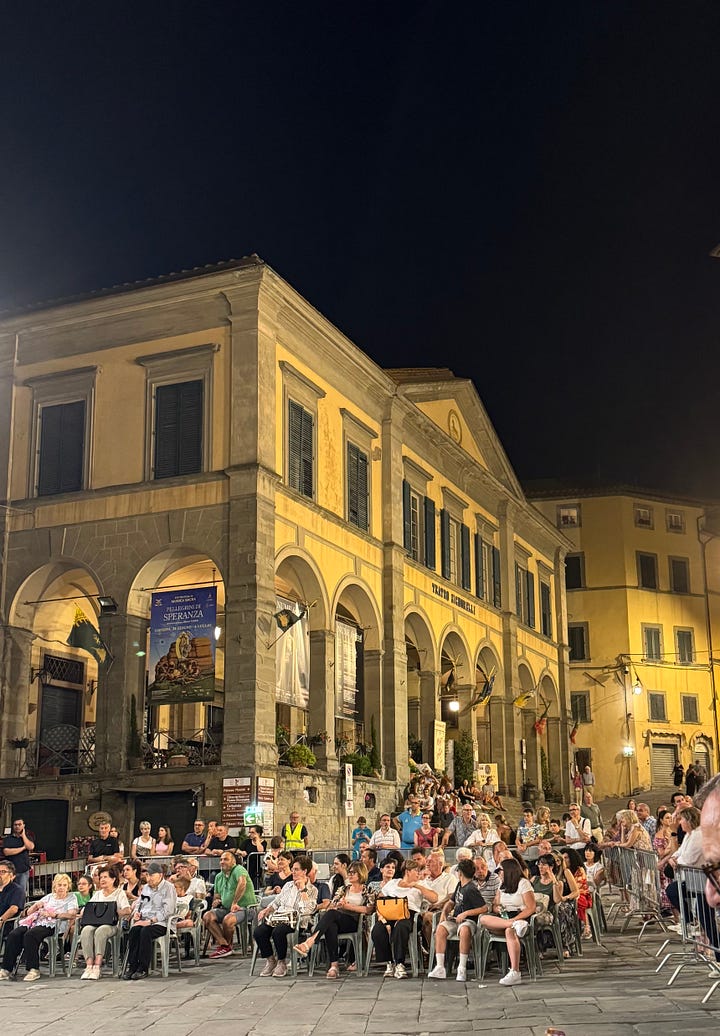
This week I was in Pienza and Montefollonico. Same calm, only even fewer people. Yesterday in Buonconvento, the whole town seemed to have fallen into a charmed siesta.
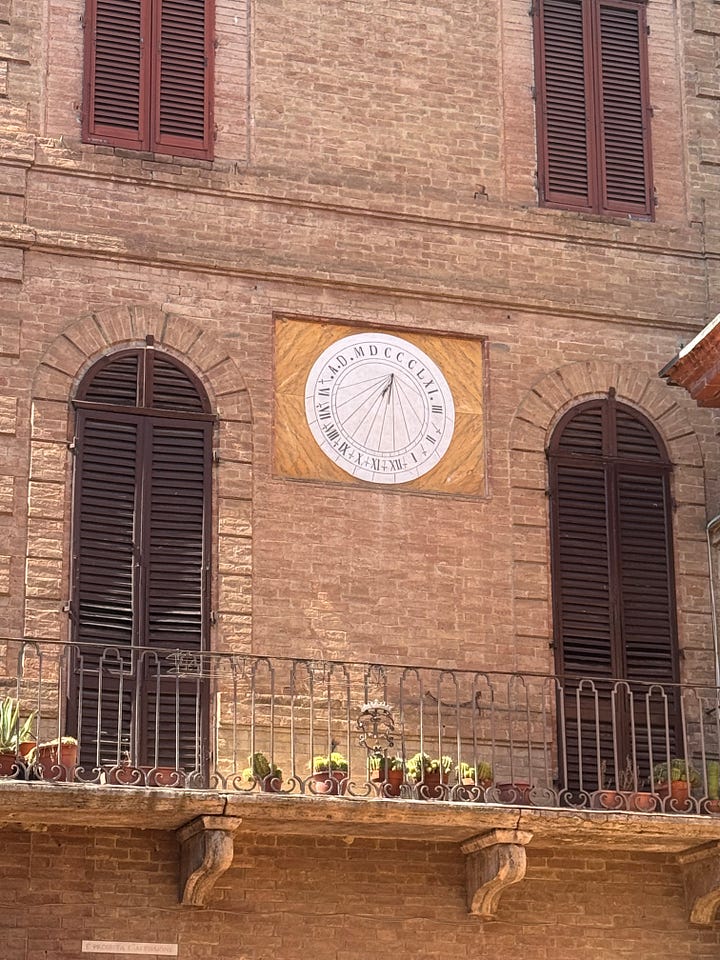
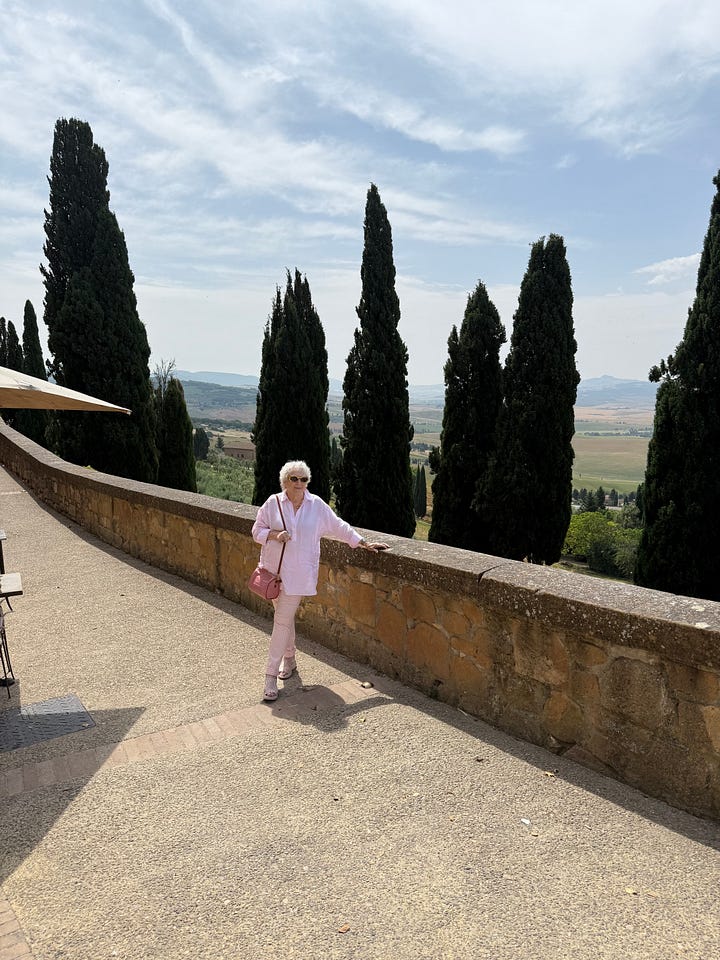
Friends visiting La Foce, the garden of writer Iris Origo, reported the bliss of having the flowers to themselves. SO, fear not. If you come, minimize the time where people throng, and seek the inner heart of this fabled region. From a base, there are endless choices for a gita, a short trip to see something fascinating.
Striking out from our house yesterday, we drove with our two visiting American friends who live in Paris. We headed out through the rolling, austere hills called Crete Sinesi (meaning clay soil) to visit Monte Oliveto Maggiore, which endures from 1319. Near the intact medieval town of Asciano, the isolated monastery hides from the world in a cypress forest. The extensive complex is still home to twenty-eight Benedictine monks. And home, too, of a fresco cycle illustrating the life and miracles of Saint Benedict. The large paintings by Il Sodoma, “the sodomite,” aka Giovanni Antonio Bazzi, and by Luca Signorelli (Cortona home boy!) surround a courtyard. It’s interesting to see how the artists adapted their scenes to the existing architecture, and how it sometimes determines perspective. Miraculous that the work has survived all these centuries.
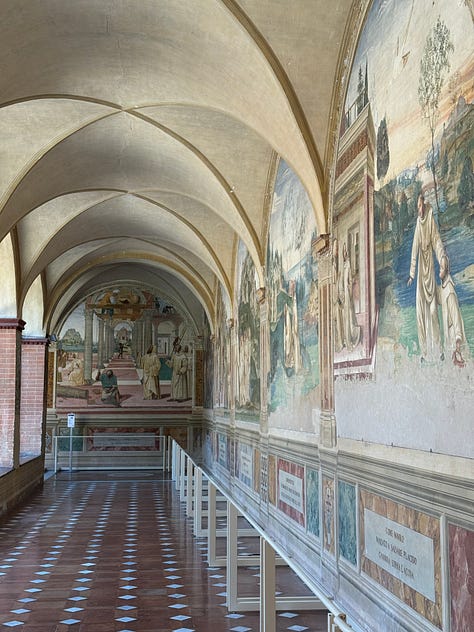
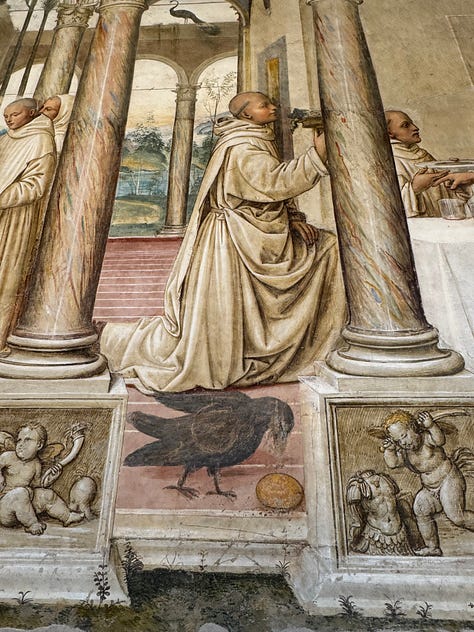
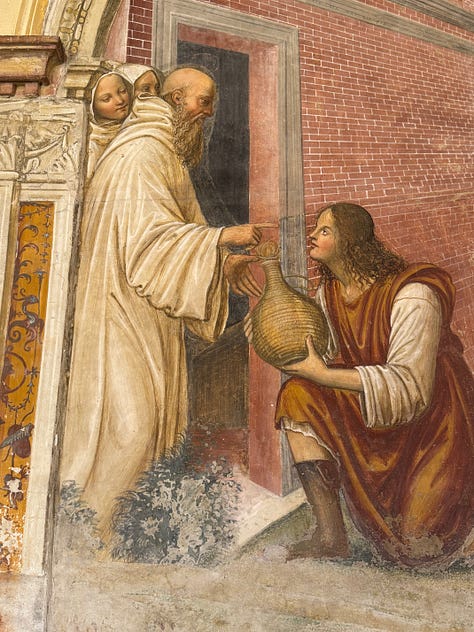


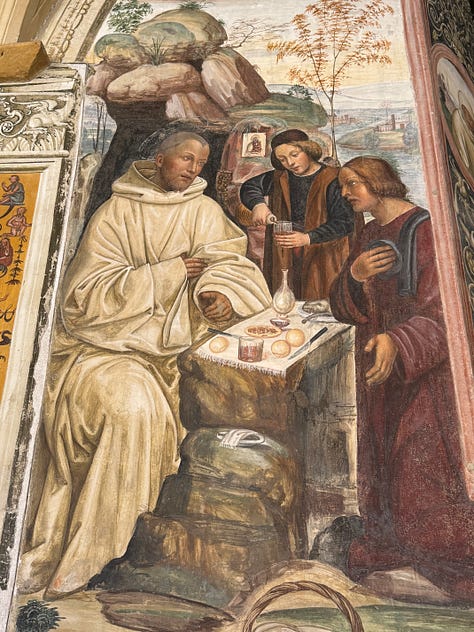

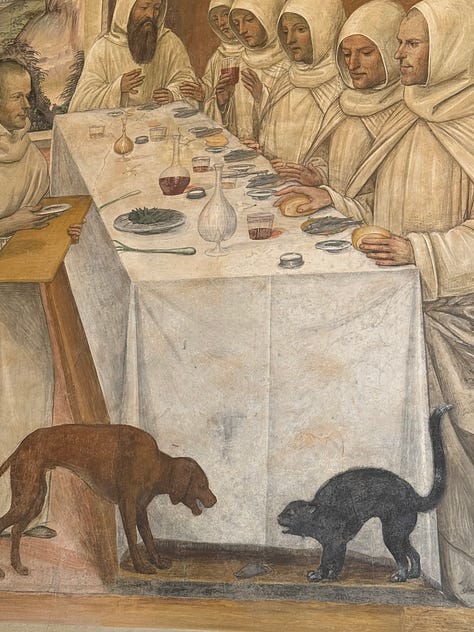
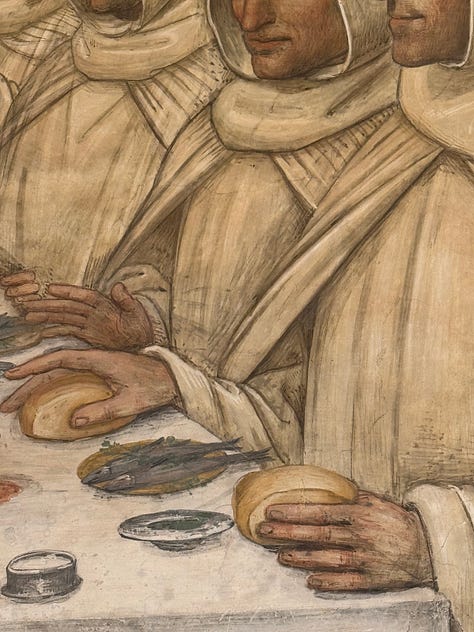
What fascinates me as much as the subject is the painters’ attention to the quotidian details—the dog and cat snarling at each other, the two fish on the plate, the tables set with carafes and bread, the bird pecking a bun. And the faces! It’s often noted that frescoes show the people who still inhabit Tuscany and this is especially true of Sodoma’s work. These frescos are all stories, some humorous—the Signorelli scene of the woman in blue serving food shows monks who have transgressed the monastery rules by eating outside the walls—and among women no less. Benedict’s miracles and good works are homey. In one, he prays that a broken colander mend. And it does!
Up a stairway also frescoed by Il Sodoma, we found the ancient library. Soon we were gently warned that we must leave because the monks were about to have lunch. I asked the monk what they were having and if we could join but he took me seriously and crisply answered no. We did get a glimpse of the dining room.
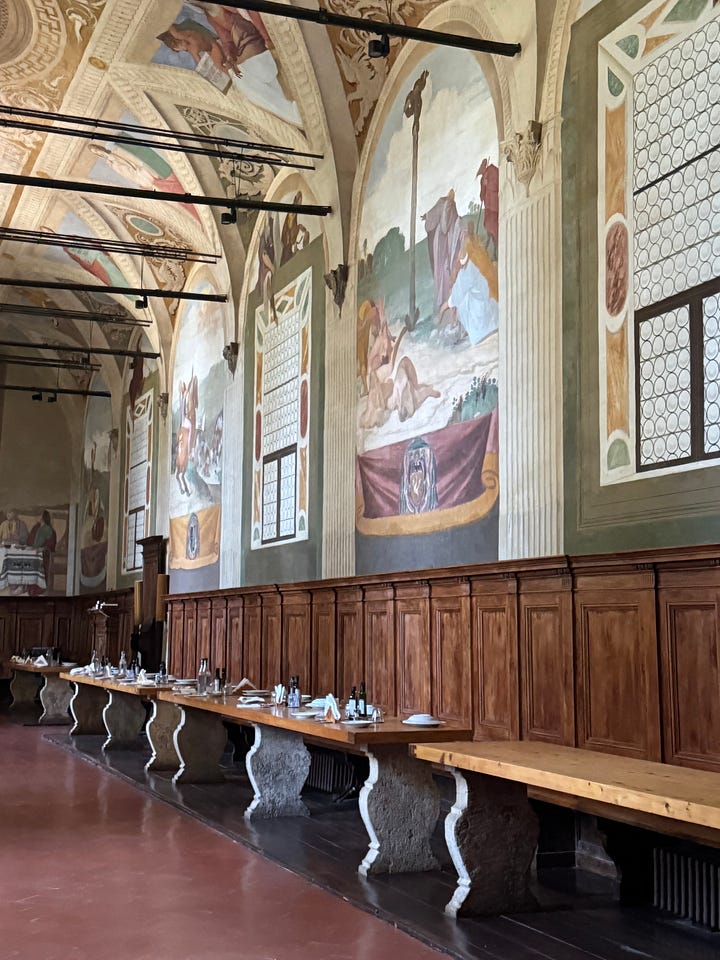
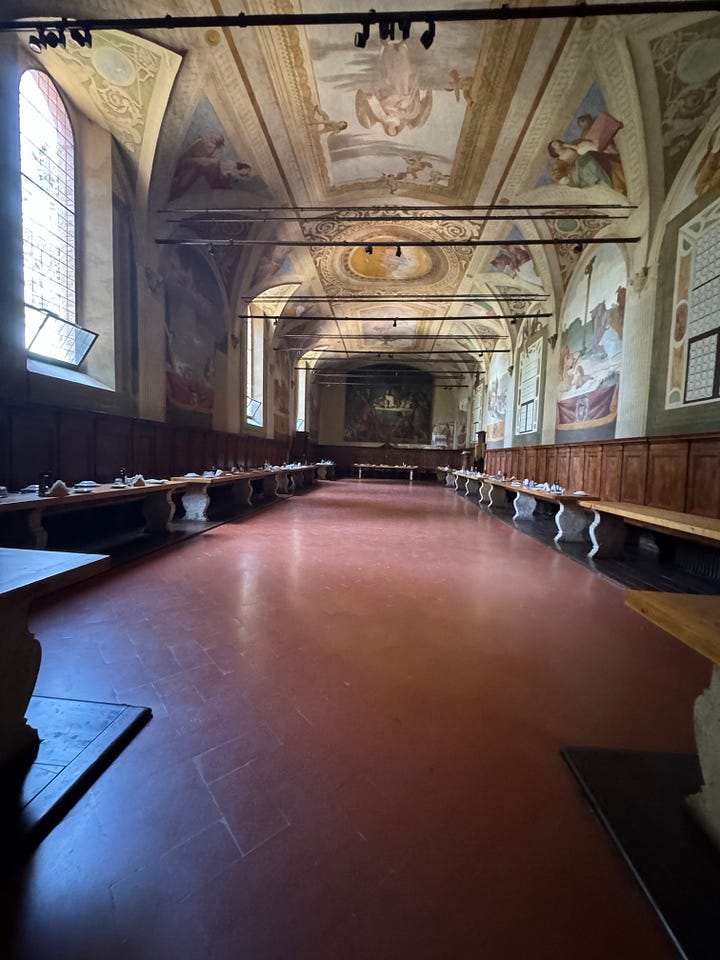
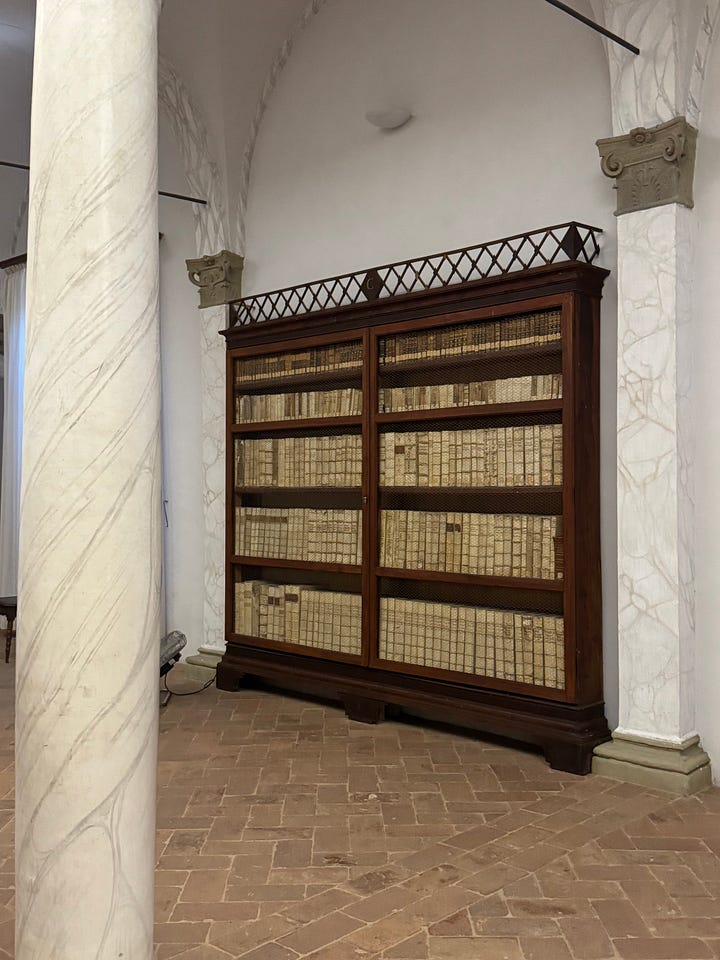
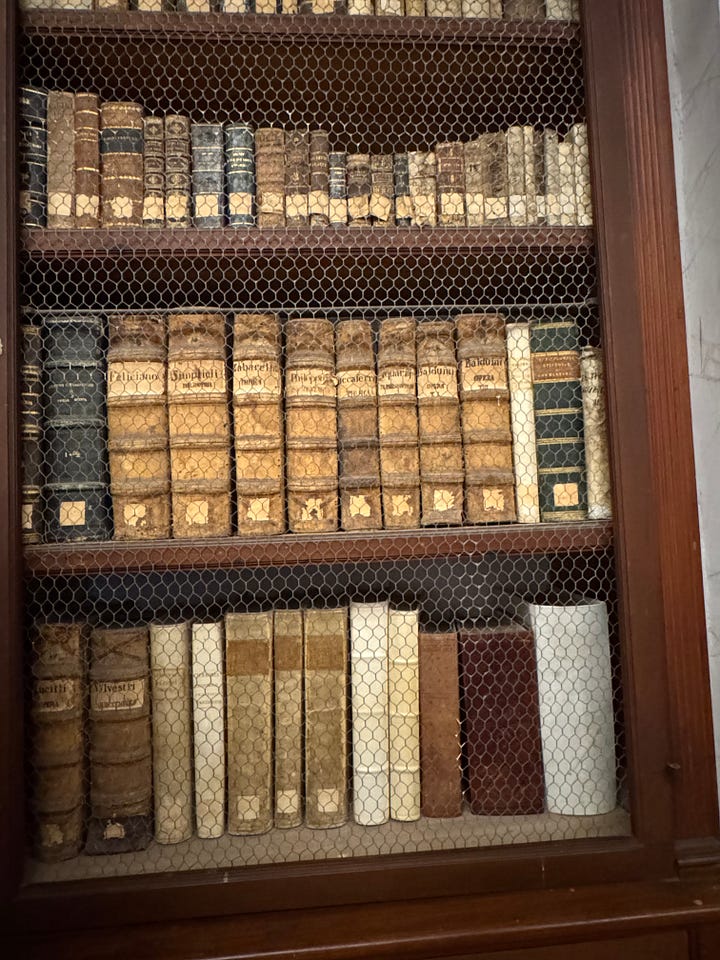
All this was overwhelming, and we left for our own lunch, which serendipitously turned out to be quintessential Italy. Only a mile or so away, we found the fortified village of Chiusure and the Locanda Il Paradiso, (+39 0577 707016) where, if you lived nearby, you’d eat once a week. Family-run by a super friendly couple, Pamela and Gerardo. She has an Etruscan face. Even though it was hot, we sat on the porch and feasted on panzanella, toast with butter and anchovies, chickpea soup, pasta caccio e pepe. Genuine Tuscan food—rustic, well-seasoned, fresh. (The Borgo is known for artichokes; I make a note to come back when they’re in season.) From a poem printed on the menu, I learned a marvelous new word: girovagando, traveling about vagabond style, without a specific goal—which describes
a grand way to spend a day in Tuscany. We moved inside for coffee and a chat with the owners. The interior could have been 1930, 1950—old school. The coffee was strong. There was laughter. This is my favorite Italy.
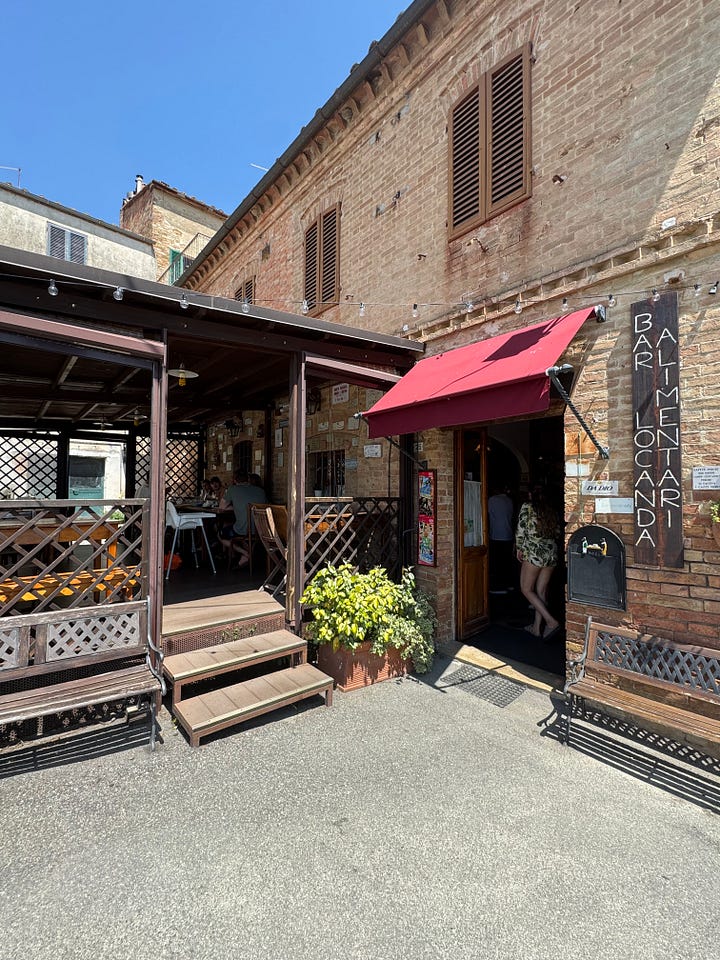
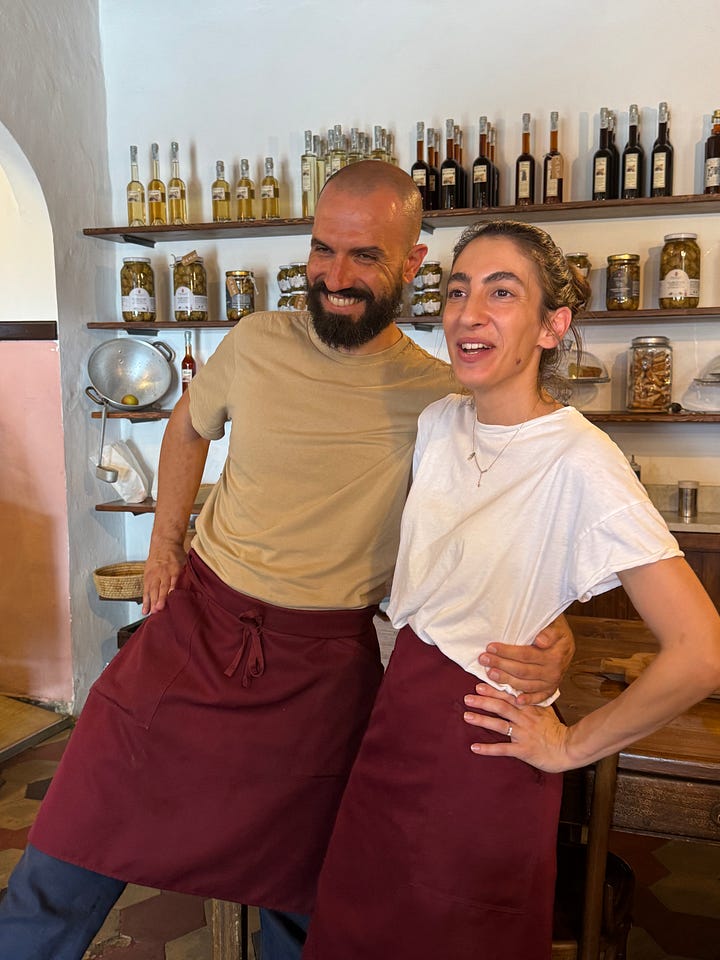
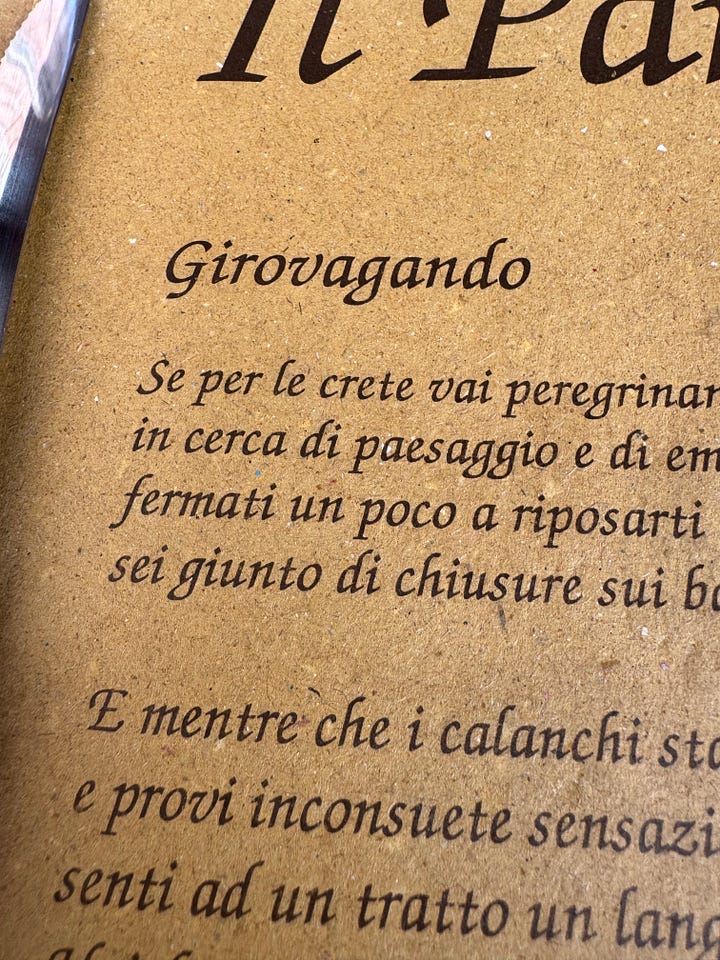
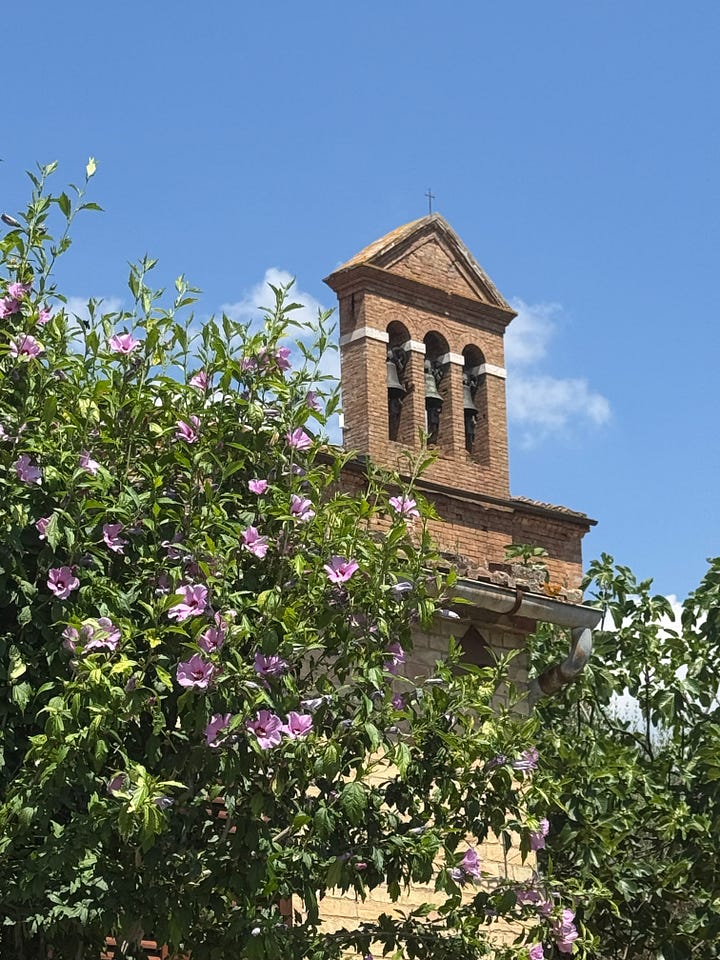
This beautiful part of Tuscany has many villages for the girovagando traveler: Castelmuzio, Trequanda, Montisi, Buonconvento, San Giovanni d”Asso, Asciano. One could wander for several happy days.




We've been to Monte Oliveto Maggiore, and to Tuscano at least 8 times. The dilemma was to go back to Monte Oliveto Maggiore for the frescoes or Sant'Antimo for the chanting. Thanks to your ristorante suggestion, problem solved. Anchovies with butter on bread--that seals it.
What a wonderful post! You are so spot on. And thanks to you Frances, this is exactly how we travelled through Tuscany last fall and it was the best trip ever. Love Pienza! We didn’t make it back to Cortona…so that will have to be on our next trip. Thanks for doing this newsletter. Ciao!